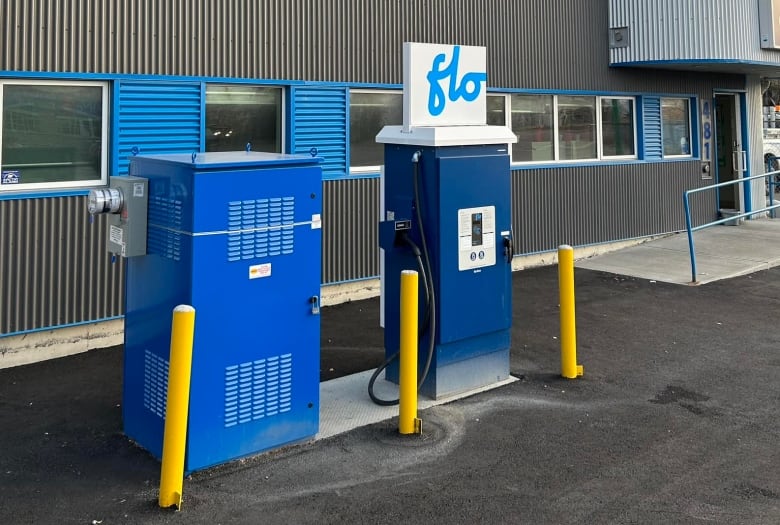Electric vehicles are getting a jolt in the N.W.T. — with the promise of funding for a network of charging stations and the recent installation of Yellowknife’s first public level 3 charger.
The territorial government announced $3.6 million would be invested in a corridor of charging stations stretching from Yellowknife down to the Alberta border on Thursday.
The money, roughly half of which comes from the federal government, will be used to build stations in Fort Providence, Enterprise, Hay River, Fort Smith and Buffalo Junction where Highway 5 and 6 connect. The level 3 charging stations, (also called direct current fast chargers) can fully charge an electric vehicle in about 30 minutes, and the territory hopes the corridor will be running by December 2024.
The network includes a station the territory has already committed to building in Behchokǫ̀, expected to be running by the end of next summer, and two level 3 chargers in Yellowknife — one which recently became available to the public.
People were allowed to start using the level 3 charger at Northland Utilities main office in Yellowknife on Oct. 4.
“We were pretty excited,” said Andrew Robinson, a board member of the Yellowknife Car Share Co-op, which rents out a pair of electric vehicles to people in Yellowknife. The co-op used the new station to charge the older of their vehicles, a 2016 Chevrolet Spark affectionately named Sparky.
“It went as fast or faster than we thought, and it was cheaper than we thought,” said Robinson.

Northland Utilities is in charge of installing and operating both level 3 chargers in Yellowknife, the second of which it expects will available in the near future. The utilities company said the charging rate is $32 per hour.
Robinson said Sparky started charging at 20 kilowatts and eventually warmed up to 44 kilowatts. It took about 30 minutes to reach a full charge, and it only cost $4.50, he said — suggesting the price was lower than advertised.
A spokesperson for Northland Utilities said, however, the price had been incorrectly entered into the fast charger as 32 cents per kilowatt hour, and was changed Thursday to $32 per hour regardless of charging capacity. That means Sparky’s charge should have cost $16.
There are level 2 charging stations in the territory as well, which can be found on the website PlugShare.
Would you flee a wildfire in an EV?
Wildfires forced people to flee from several N.W.T. communities this summer, and nearly 70 per cent of the territory’s population was under an evacuation order at the same time.
Many of those people fled in their vehicles, giving electric vehicle drivers across Canada something to think about — they’d face a unique set of challenges if they evacuated in charged cars. Would there be enough chargers along the way? How many people would be using them at the same time? What would happen if there were power outages?
Remi Gervais, the manager of the N.W.T.’s energy policy and programs, said if the charging corridor had been operational, the number of electric vehicles within the territory could have evacuated amid the 2023 wildfire situation “without issue.”
“Going forward, we’ll have to adapt the existing infrastructure to the number of electric vehicles. It’s really hard to predict exactly, how the future is going to look in terms of impacts of climate change and how we have to evacuate from a community.”
Robinson said he wouldn’t use an electric vehicle to escape a wildfire because of the lack of charging infrastructure at the moment. He sees electric vehicles as a way to travel within northern communities, rather than between them.
“Most people spend most of their time driving their vehicles around the community they live in, and in that sense, with our Yellowknife car share, that’s the whole point,” he said. Robinson would like to see more support for people who want to use electric vehicles within their community.
Even so, he said being able to leave the territory is a barrier for people considering buying their own electric vehicles — and he’s hopeful the charging corridor will help ease those concerns.
Gervais said the territory expects the charging network will reduce the carbon dioxide equivalent from vehicles by 1,000 tonnes per year by 2030. The effect of people adopting electric vehicles for their daily commutes, he said, would be even higher but harder to quantify.
The reduction is part of the territory’s overall plan to reduce human-caused emissions by 30 per cent from what they were in 2005 by the same time — a goal it’s expected to meet not because of ambitious change, but because the Diavik diamond mine is slated to close by then.













Leave a comment